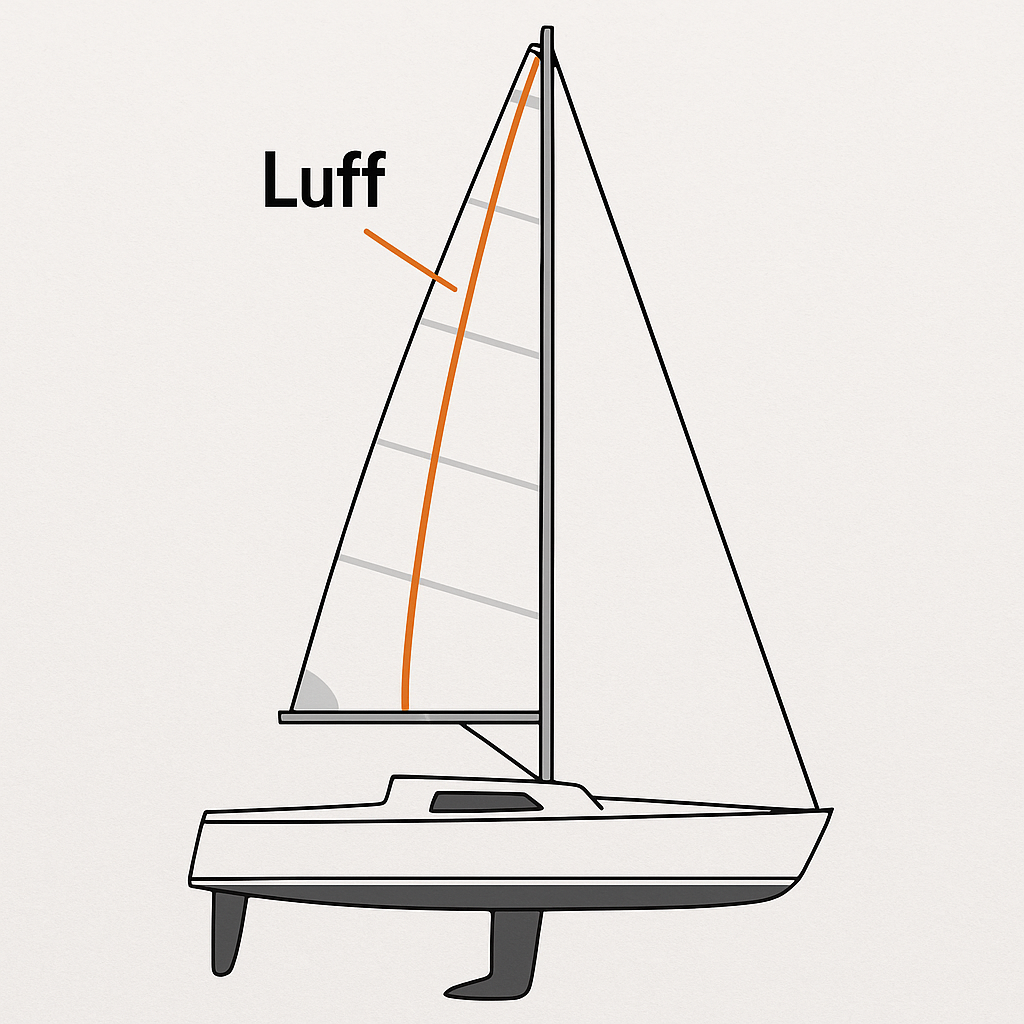Luff: The Leading Edge of the Sail, Where the Downhaul Is Applied to Control Tension
Definition: The luff is the leading edge of a sail, running from the head (top) to the tack (bottom) of the sail. It is the edge closest to the wind and the mast, and it plays a critical role in the sail’s shape and performance. The luff is where tension is applied using the downhaul or Cunningham to control the sail’s draft and optimize its aerodynamic efficiency.
Understanding the Luff: In sailing, the luff is a crucial part of the sail’s structure. Proper tension along the luff is necessary to ensure that the sail sets correctly and performs well. If the luff is too loose, the sail will not maintain its intended shape, resulting in poor performance and increased drag. Conversely, if the luff is too tight, the sail may become overly flat, reducing its power in lighter winds.
How the Luff Works:
Tension Control: The luff is tensioned using the downhaul or Cunningham, which pulls the sail downward along the mast. This tension affects the draft (depth) of the sail, with more tension flattening the sail and less tension allowing it to become fuller.
Sail Shape: Proper luff tension helps maintain the correct aerodynamic shape of the sail. A well-tensioned luff ensures that the sail’s leading edge remains smooth and aligned with the wind, minimizing turbulence and maximizing lift.
Applications in Sailing:
Upwind Sailing: The luff is particularly important when sailing upwind, where precise control of the sail’s shape is essential for maintaining speed and direction.
Sail Trim: Adjusting the luff tension is a key part of sail trim. Sailors use the downhaul or Cunningham to fine-tune the luff tension, adapting the sail’s shape to the wind conditions.
Reefing: When reducing sail area (reefing), the luff is secured at a lower position on the mast, and maintaining proper luff tension is essential to keep the sail shape effective.
Examples of Usage:
"The luff of the sail needs more tension to flatten the sail as we head upwind."
"Watch the luff for any signs of fluttering; it may indicate that the sail is not properly trimmed."
"The Cunningham helps adjust the tension along the luff to maintain an optimal sail shape."
Visual Representation:
Image Description: Diagram of a sailboat showing the luff of the mainsail, with emphasis on its location along the leading edge of the sail.
Importance in Sailing:
The luff is a fundamental element of sail design and performance. Proper management of luff tension ensures that the sail maintains its intended shape, which is crucial for efficient sailing. Understanding how to control the luff using tools like the downhaul or Cunningham is essential for optimizing sail trim, particularly in changing wind conditions.
Related Terms:
Downhaul: A line used to control the tension on the luff, helping to adjust the sail’s shape.
Cunningham: A specific type of downhaul that allows fine-tuning of the luff tension on the mainsail.
Leech: The trailing edge of the sail, opposite the luff.
Foot: The bottom edge of the sail, running from the tack to the clew.
Conclusion:
The luff is the leading edge of a sail, critical to maintaining proper sail shape and performance. By managing the tension along the luff with tools like the downhaul or Cunningham, sailors can optimize the sail’s aerodynamics, ensuring efficient and effective sailing. Mastering luff tension adjustments is key to achieving the best possible performance in a variety of wind conditions.
